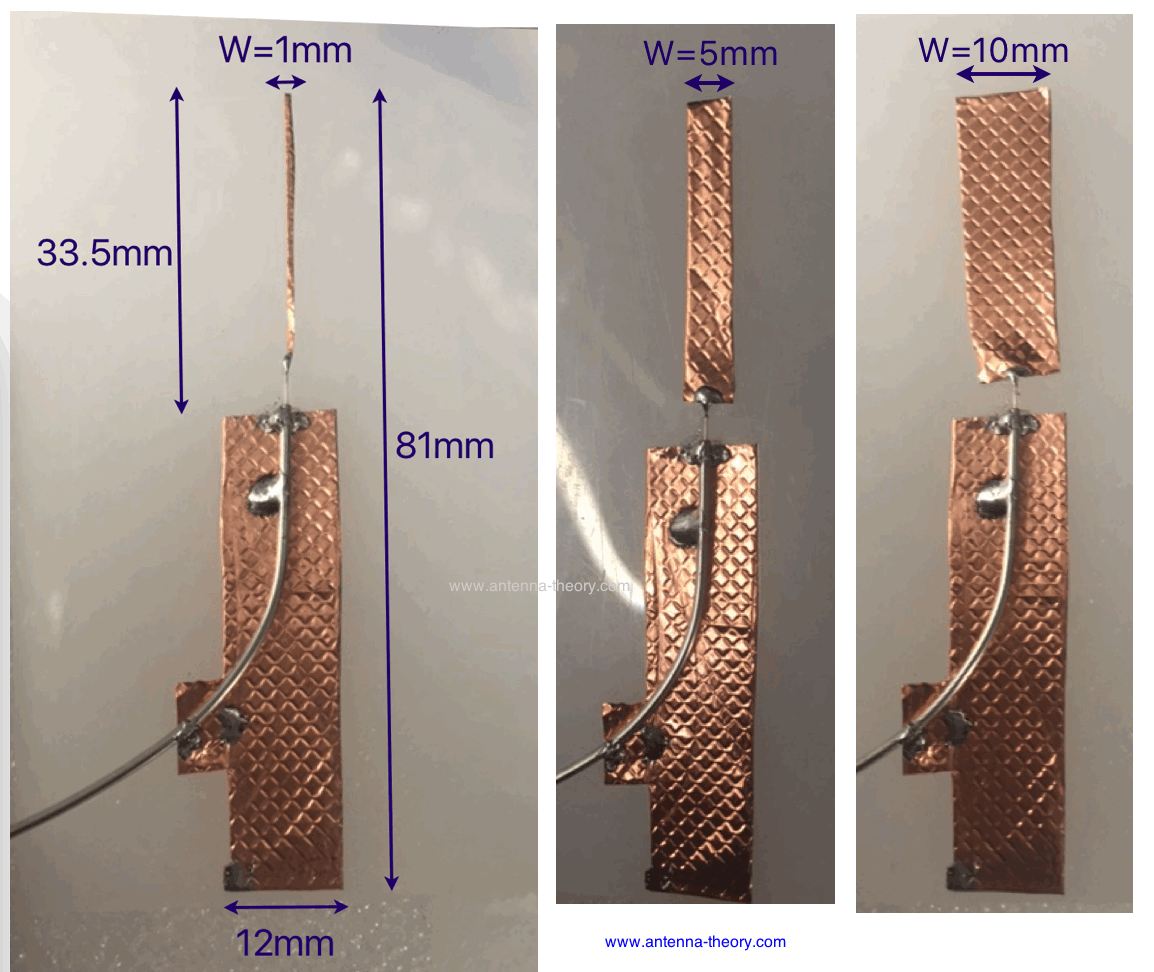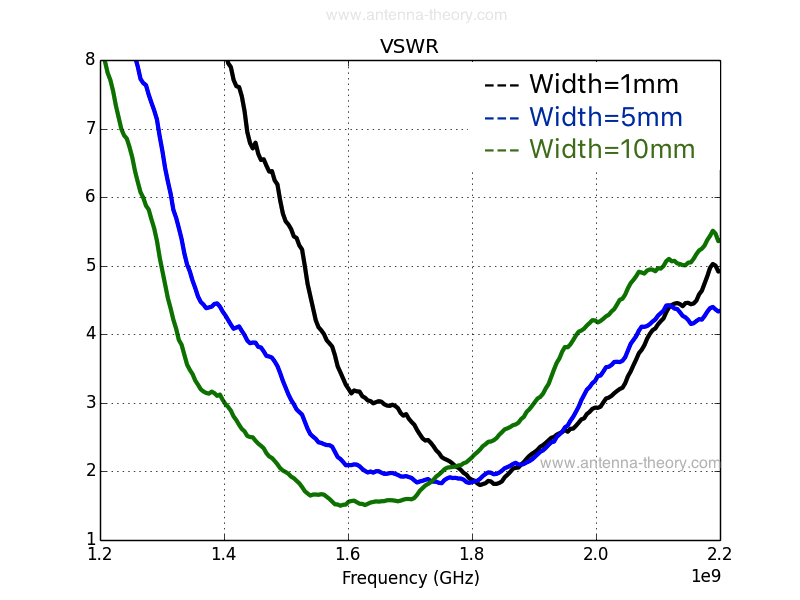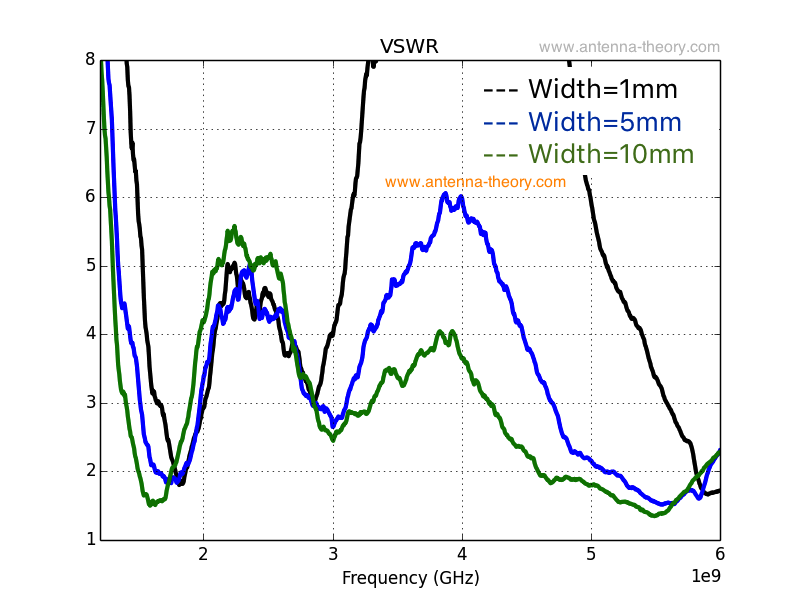Broadband Dipole Antenna
|
A standard rule of thumb in antenna design is: an antenna can be made more broadband by increasing the volume it occupies. Hence, a dipole antenna can be made more broadband by increasing the radius A of the dipole. These antennas are also known as wideband dipoles.
As an example, method of moment simulations will be performed on dipoles of length 1.5 meters. At this length, the dipole is a half-wavelength long at 100 MHz. Three cases are considered:
The resulting S11 for each of these three cases is plotted versus frequency in Figure 1 (assuming matched to a 50 Ohm load).
 Figure 1. Magnitude of S11 for Dipoles of Varying Radii.
The first thing apparent from Figure 1 is that the fatter the dipole is made, the larger the bandwidth becomes. For instance, if the bandwidth is measured as the frequency range over which |S11|<-9 dB, then the bandwidths are 6.5 MHz, 14 MHz, and 24 MHz, for the blue, green and red curves, respectively. Secondly, the fatter the dipole gets the lower the resonant frequency becomes. In other words, if an antenna is to resonate at 100 MHz, the resonant length decreases as the dipole gets fatter.
Experimental Results for Wideband Dipole AntennasMaybe you don't trust the simulations for antenna design? That's good - neither do I. Here is some mocked-up physical prototype antenna data. I start with a simple dipole antenna as shown in Figure 1. It is 81mm long, and I will measure 3 widths as shown in Figure 2:  Figure 2. Three identical antennas with different widths for comparison. Quick Side Note: I made the lower half of the dipole antenna thick (12mm wide). This is to make the impact of the test cable small - the RF current will have less incentive to flow on the thin (high inductance) section of the cable than it will the actual antenna. I also measure the antenna impedance with ferrite-beaded cables to further reduce the impact of the cable on the antenna measurement. If this doesn't make sense, don't worry about it, just skip it. The VSWR for these antennas are shown in Figure 3:
 Figure 3. VSWR for 3 identical antennas of varying width. From Figure 3, we can see that the results line up with the simulation data. The wider the dipole antenna gets, the wider the bandwidth is. The center frequency for the thinnest dipole is 1.82 GHz, the 5mm width dipole is centered at 1.74 GHz, and the 10mm wide dipole has a center frequency of 1.65 GHz. The 3:1 VSWR bandwidth of the antennas increases from 36 MHz for the 1mm width case, to 46 MHz for the 5mm width, and 50 MHz for the 10mm width antenna. Note: See how in the simulation section I measured bandwidth when s11<-9 dB and in this section it was VSWR<3? Bandwidth has no fixed definition, and can also be bandwidth where efficiency is above 50% (for instance). The results get a little more interesting if we look over a wider frequency range, as shown in Figure 4:
 Figure 4. VSWR for 3 antennas, measured to 6GHz. From Figure 4, you can see that the bandwidth at 5GHz starts to get very large for the wider antennas as well. Hence, this page can be summed up very succinctly: to get wider bandwidth, fatten up your antennas (this means: use more volume).
|
Antenna Theory (Home)